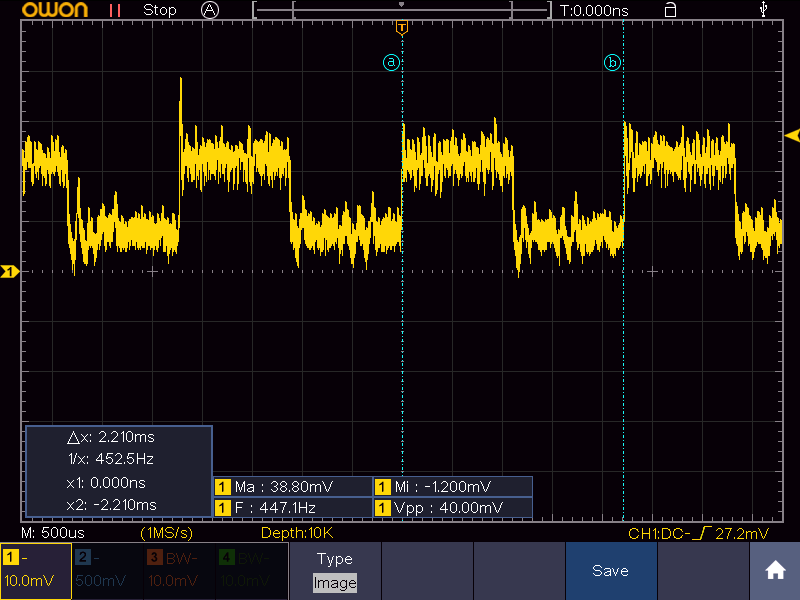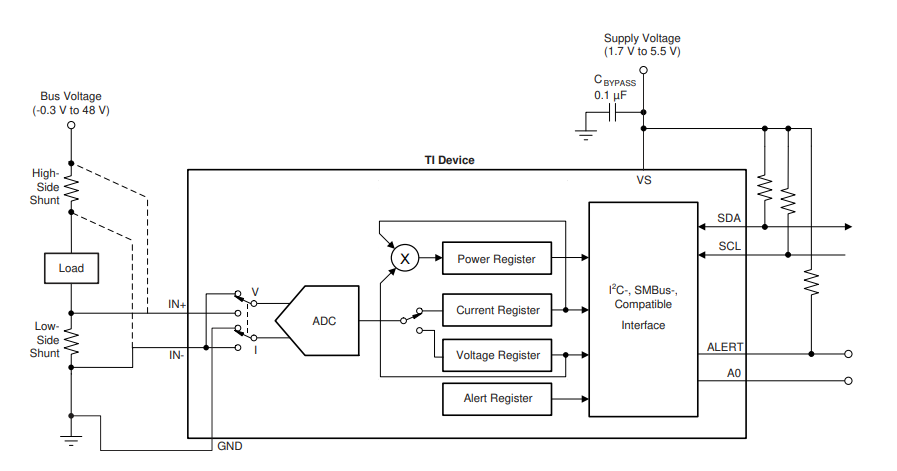Other Parts Discussed in Thread: INA236, , INA219
Tool/software:
Hello everyone.
I need to measure the voltage applied to a load and the current that goes into it. Power comes from VBAT and goes to the load through a 10 mΩ shunt resistor (Rs).
Voltage and "high" current (up to 8.192 A based on INA236 full scale) is measured with the top INA236BIDDFR (INAH) with no problems.
I also want to measure "low" current, for when the DUT (device under test) is sleeping. For that I use the INA190A3IDCKR (GAIN) with a gain of 100, that lets me measure up to 20.48 mA with a LSB of 625 nA in a seconf INA236.
The issue I am having is that the GAIN output is oscillating. I found that the oscillation goes away if I remove the INAH IC. I also tried removing Ra1, with no effect (with INAH still soldered).
The oscillation itself, is a square wave from 10 mV (fixed) to 20 or 25 mV (dependent on the load current, which was around 4 mA when scope capture was taken) with a frequency of 450 Hz.


May you suggest an alternative to the INA190 or, maybe, a completely different approach with another IC that lets me measure “high” and “low” currents?
I haven’t tried it yet, but perhaps, adding a positive reference to the INA190 to get away from the ground rail helps eliminate its output oscillation.




